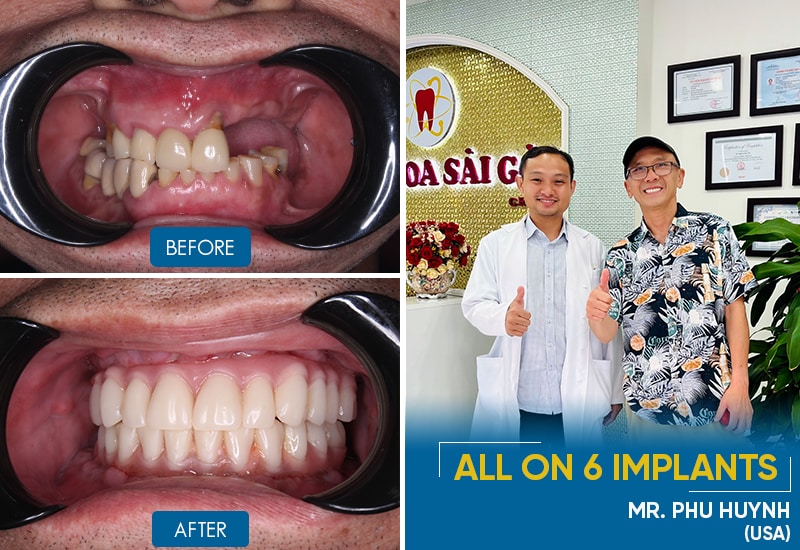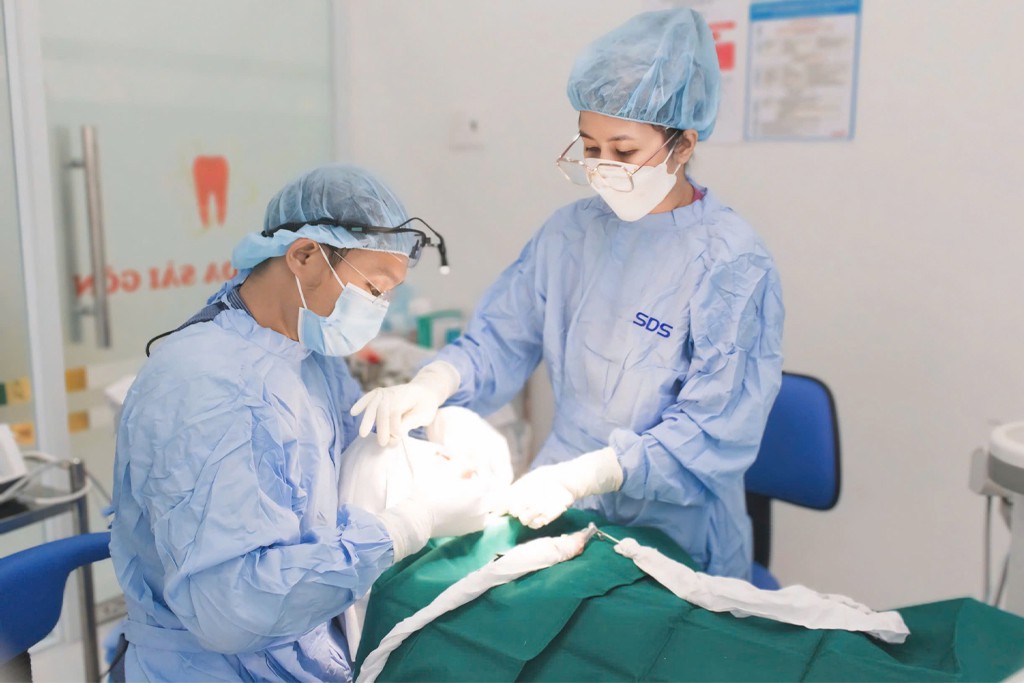Immediate tooth implant is a modern dental technique that allows for the placement of an implant immediately after tooth extraction, enabling you to have a new tooth quickly and conveniently compared to traditional methods. With this technique, you don’t have to wait for bone healing, significantly reducing treatment time and providing immediate aesthetic results.

Is it possible to place immediate tooth implants?
The question of whether it’s possible to place immediate tooth implants after extraction is one that many patients ponder. Immediate placement, also known as immediate load dental implants, involves placing an implant immediately following the extraction of a tooth. This technique has gained popularity due to its efficiency and potential benefits, yet it is not applicable to every patient or situation.
Understanding Immediate Placement
Immediate placement of the implant occurs right after tooth extraction. When a tooth is removed, there is usually a healthy portion of bone remaining in the jaw, which can serve as a supportive structure for the implant. This procedure aims to capitalize on that very moment, allowing for a seamless transition from extraction to implantation.
However, the viability of this approach relies on various factors. For one, the condition of the existing bone plays a pivotal role. If the bone structure is compromised due to infection, trauma, or disease, additional procedures, such as a bone graft, may be required before an immediate implant can be placed.

The Role of Gums and Surrounding Tissue
Alongside bone health, the condition of the gums is equally critical. Healthy gum tissue is essential for the success of an immediate implant placement. Infection or inflammation around the extraction site can hinder the healing process and increase the risk of complications. Therefore, ensuring that the gums are healthy prior to the procedure is vital.
Case-by-Case Suitability
It’s also important to note that the location and type of tooth loss matter significantly. For example, immediate placement is generally more feasible for single tooth loss in the anterior (front) region or premolar areas. In contrast, cases involving multiple tooth losses or molars may require a different treatment strategy. The skill and experience of the dentist performing the procedure further affect the likelihood of successful immediate placement.
In summary, while immediate implant placement is possible, it necessitates careful evaluation of the patient’s overall oral health, the condition of the surrounding tissues, and the specifics of the tooth loss. This intricate interplay of factors ensures that each patient’s needs are met effectively.



Can dental implants be done immediately?
Dental implants can indeed be performed immediately after tooth extraction in many situations. However, the term “immediate” refers to a brief window of time following the extraction rather than a guarantee that the procedure will happen on the same day. The decision regarding whether immediate placement is appropriate involves a comprehensive assessment of the patient’s unique circumstances and health status.
Factors Influencing Timing
Several key factors impact the timing of immediate dental implants. First and foremost is the reason behind the tooth loss. Whether due to decay, trauma, or periodontal disease, the underlying cause can affect the appropriateness of immediate placement.
The condition of the jawbone also plays a significant role. Sufficient bone density is crucial for creating a stable foundation for the implant. If the bone is weak or insufficient, additional procedures may be necessary, which could delay the implant placement.
Comprehensive Evaluation and Diagnostics
Before determining if immediate implant placement is feasible, dentists typically conduct an in-depth evaluation. This encompasses several components, including:
- Medical History: Discuss any pre-existing health conditions or medications that may affect the procedure.
- Oral Examination: Assessing the health of the gums, jawbone, and extraction site.
- Dental X-rays: Evaluating the bone structure and roots of the adjacent teeth.
- 3D Imaging (CBCT): Providing a detailed visual of the jaw, allowing for more refined planning.
Through this meticulous assessment, dentists can gauge whether immediate placement is a viable option tailored to the patient’s specific case.

The Importance of Patient Communication
Open communication between the patient and the dentist is crucial throughout this process. Patients should feel comfortable discussing their concerns, expectations, and any previous experiences related to dental work. This dialogue helps create a comprehensive picture of what to expect during the procedure and can alleviate any anxiety surrounding the notion of immediate dental implants.
In conclusion, while immediate placement of dental implants is certainly possible, achieving optimal results relies heavily on the individualized evaluation of each patient’s unique situation. A thorough understanding of the factors at play empowers both the patient and dentist to make informed decisions about treatment options.
Is immediate tooth implants painful?
Pain is a common concern when considering any dental procedure, including immediate tooth implants. Understanding the pain associated with the process is essential for patients contemplating this treatment. Pain perception varies from person to person, influenced by factors such as the complexity of the procedure, the individual’s pain tolerance, and adherence to post-operative care guidelines.

During the Procedure
During the immediate implant procedure, local anesthesia is typically administered to numb the area, making the extraction and implant placement virtually painless. While patients may feel some pressure during the extraction process and implant placement, they should not experience significant discomfort. Most dental professionals prioritize patient comfort and employ effective techniques to minimize any potential pain during the surgery.
Post-Operative Discomfort
After the procedure, some level of discomfort is expected. Patients may experience mild pain, swelling, and bruising around the implant site. Fortunately, these symptoms are often manageable with over-the-counter pain relievers like ibuprofen or acetaminophen. It’s advisable to follow the dentist’s recommendations for managing post-operative pain and discomfort, which may include:
- Prescribed Pain Medication: In some cases, stronger pain relief may be prescribed to help manage discomfort.
- Cold Compress Application: Applying cold compresses to the affected area can reduce swelling and numb the site.
- Salt Water Rinses: Gentle rinsing with salt water can promote healing and keep the area clean.
Addressing Risks of Infection
While immediate tooth implants are generally safe, there is always a small risk of complications, including infection and persistent pain. Signs of infection may include severe pain, excessive swelling, bleeding, or fever. If any of these symptoms occur post-operatively, it is crucial to contact the dentist promptly.
Patient education plays a vital role in pain management after an immediate implant placement. Understanding what to expect and how to take care of oneself during recovery can greatly enhance the patient’s overall experience. By following post-operative care instructions diligently, individuals can minimize discomfort and foster a smoother healing process.
Can I get a temporary tooth while waiting for an implant?
One of the most appealing aspects of immediate tooth implants is the potential for obtaining a temporary tooth while awaiting the final implant restoration. This temporary restoration, commonly referred to as a temporary crown or prosthesis, serves several vital purposes during the healing process.
Aesthetic Improvements
One of the primary reasons for opting for a temporary tooth is aesthetic enhancement. The gap created by a missing tooth can be unsightly and negatively impact one’s self-esteem. A temporary tooth fills this gap, helping to restore the appearance of your smile while the implant integrates with the jawbone.
Functionality and Protection
In addition to aesthetics, a temporary tooth improves the patient’s ability to chew and speak comfortably. It acts as a protective barrier for the implant site, safeguarding it from potential trauma or irritation during the healing period. Furthermore, maintaining the shape and structure of the mouth is essential for preventing bite changes that can arise from tooth loss.
Types of Temporary Teeth
Several types of temporary teeth can be utilized, depending on the specific case and the dentist’s preference. Some common options include:
- Acrylic Temporary: Fabricated directly in the dental office, acrylic temporaries are cost-effective and relatively easy to place. They can be adjusted or replaced as needed.
- Resin-Bonded Temporary: Made from resin material, these temporaries are bonded to adjacent teeth with a special adhesive. They provide improved aesthetics and functionality compared to acrylic options.
- Zirconia or Porcelain Temporary: Although more durable and aesthetically pleasing, these temporaries require more time and expertise to fabricate, making them a less common choice for immediate placements.

When is a Temporary Tooth Necessary?
There are scenarios where a temporary tooth becomes essential. These include:
- Immediate placement: A temporary crown can be placed over an immediate implant to protect the area and aid in healing.
- Bone grafting: If a bone graft is necessary before the implant placement, a temporary tooth can bridge the gap until the implant is ready.
- Delayed implant approach: In cases where healing is required before implant placement, a temporary tooth serves as a functional and aesthetic solution during the waiting period.
In essence, securing a temporary tooth while awaiting the completion of an immediate tooth implant provides invaluable benefits, improving aesthetics, functionality, and protection during the healing process.
What are the advantages of immediate tooth implants?
Choosing immediate tooth implants offers numerous advantages compared to traditional implantation methods and other tooth replacement options. Many patients find that the benefits of immediate implant placement align perfectly with their desires for a streamlined and effective solution to tooth loss.
Shorter Treatment Time
Arguably one of the most significant advantages is the reduced treatment time associated with immediate placement. Instead of waiting weeks or months for the extraction site to heal before undergoing a subsequent implant placement surgery, immediate implants combine these two steps into one convenient appointment. This shortened overall treatment duration can be particularly appealing for those eager to restore their smiles quickly.
Enhanced Aesthetics
Another compelling advantage of immediate implants is the opportunity to place a temporary tooth immediately after the procedure. This capability not only maintains the aesthetic appearance of one’s smile throughout the treatment period but also alleviates the need for prolonged gaps or removable dentures. Patients can feel confident knowing their smiles remain intact as they navigate the healing journey.
Bone Preservation Benefits
Placing the implant immediately following extraction can preserve the jawbone in the extraction site. The implant acts as a placeholder, helping to prevent bone resorption—the loss of bone density that often occurs when a tooth is missing. By preserving bone structure, immediate implants contribute to better long-term outcomes for jaw health and stability.
Reduced Number of Surgical Procedures
With immediate placement, the number of surgical procedures required for tooth replacement is minimized. Fewer surgical interventions not only reduce treatment time but also lower the risk of associated complications. Additionally, patients enjoy less discomfort while navigating a more efficient pathway toward regaining their oral function.
Improved Convenience
The convenience factor cannot be overstated. Immediate tooth implants streamline the process, reducing the number of visits required to achieve a complete resolution to tooth loss. Patients who lead busy lives appreciate the efficiency of immediate placement, enabling them to return to their daily routines without lengthy interruptions.
Increased Patient Comfort
Reducing overall treatment times and facilitating the possibility of immediate tooth restoration can significantly improve the patient’s comfort level. Knowing that they can regain their smile and dental functionality quickly contributes positively to the patient’s emotional well-being.


Enhanced Functional Results
Immediate placement also has the potential to yield better functional results. By inserting the implant immediately, the surrounding tissues’ integrity is maintained, promoting more effective integration of the implant with the jawbone. Patients can return to normal chewing and speaking functions sooner, enhancing their quality of life during recovery.
In summary, the advantages of immediate loading implants and immediate placement extend beyond mere convenience. They encompass aspects of aesthetics, functionality, preservation of bone health, and improved overall patient experience, making them a preferred choice for many facing tooth loss.
Conclusion
The decision to pursue an immediate tooth implant is an important one that can profoundly impact a patient’s life. With advancements in dental technology and techniques, immediate implants offer a practical and efficient solution for tooth replacement. By carefully assessing the suitability of the procedure based on individual factors—such as bone and gum health, the reason for tooth loss, and the dentist’s expertise—patients can confidently embark on their journey toward restoring their smiles.
Moreover, understanding the nuances of pain management, the availability of temporary solutions, and the substantial advantages associated with immediate placements can empower patients to make informed decisions regarding their dental care.
Ultimately, immediate tooth implants symbolize hope and renewal for those grappling with tooth loss. As patients navigate the complexities of their oral health and treatment options, they can do so with the assurance that immediate implants present a promising pathway toward reclaiming their confidence and living life to the fullest.

 Google Reviews
Google Reviews Call
Call
SAIGON IMPLANT CENTER
Best dentist in Vietnam
Saigon Implant Center - Dental Clinic utilizes the latest technology for specialized treatment in the field of Single implant, full jaw implants, All on 4 implants, All on 6 implants, Zygoma implant....
SAIGON IMPLANT CENTER
Best dentist in Vietnam
Saigon Implant Center - Dental Clinic utilizes the latest technology for specialized treatment in the field of Single implant, full jaw implants, All on 4 implants, All on 6 implants, Zygoma implant....